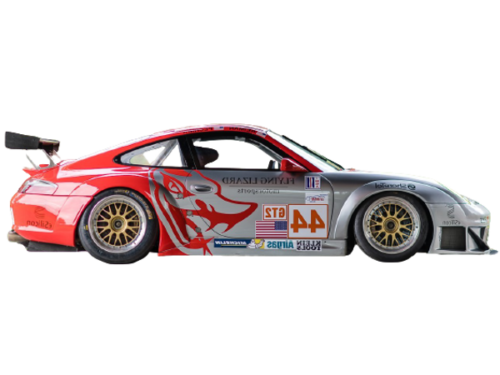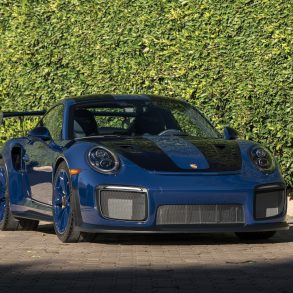(2004 – 2005) Porsche 911 GT3 RSR (996) – Ultimate Guide
In the 2000 FIA GT Championship, the 996 GT3 R was the dominant racer in the new N-GT class and won every run. In the same year, the factory-supported Phoenix Racing won the 24-hour race at the Nürburgring. In 2001, the modified version, now called the 996 GT3 RS, was used. The vehicle was not only very successful in its class, it also achieved overall victories.
For the 2004 and 2005 racing season, Porsche Motorsport used the 911 GT3 RSR. This near-standard racing sportscar aimed to keep private customer teams competitive in international Gran Turismo sport and to continue the success of the predecessor model which won its class at the Le Mans 24 Hours five times in succession, became a record and title winner in the American Le Mans Series as well as the FIA GT Championship, and secured the overall win at this year’s Daytona 24 Hour race.
Based on the road-going 996 911 GT3 RS, the GT3 RSR features improvements to its predecessor in all key areas. The vehicle is available in an ACO (Automobile Club de l’Ouest) version for competing in Le Mans and in the American Le Mans Series as well as in a FIA specification. The 911 GT3 RSR features a modified front which improves downforce at the front axle.
The 3.6-litre, six-cylinder boxer engine delivers 445 hp at 8,250 revs. Maximum torque is now 405 Nm at 7,200 rpm, with top revs reached at 8,500 (for the FIA specification with two 30.8 mm air restrictors). New pistons and rods as well as a new valve gear result in a moderate power increase with the focus on further-improved driveability and durability. A characteristic feature of the new RSR is its air-inlet which generates ram pressure.
A six speed sequential gearbox with ignition cut ensures quick gearshifts at full throttle and offers reliable protection of the gearbox from misuse. The racing suspension, with McPherson struts in the front and the Porsche multi-link axle at the rear, features new kinematics thanks to new wheel-uprights and modified mounting points. Further improved turning in and reduced tyre wear are the most obvious results of these modifications. The double springs adjustable to four settings, the adjustable shock absorbers and anti-roll bars as well as uniball joints ensure a precise set-up to suit each circuit.
The brake system features four-piston aluminium callipers on all four wheels with discs measuring 380 mm diameter in the front and 355 mm at the rear. Weighing 1,100 kgs (FIA specification) or 1,115 kgs (ACO spec) the 911 GT3 RSR sits at the minimum weight limit. Porsche offers various kits for different competition purposes. Porsche Motorsport will deliver the first vehicles in December.
The successor model 996 GT3 RSR, which can be recognized by its teardrop-shaped headlights, made its debut in 2004. By 2006, the racing versions of the Porsche 996 GT3 had achieved seven class wins in the 24 Hours of Le Mans as well as five class wins and one overall victory in the Spa 24 Hours.












